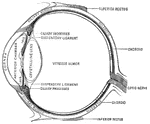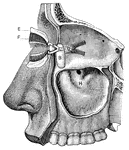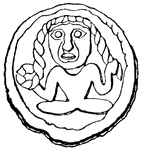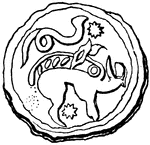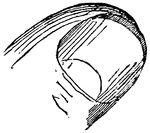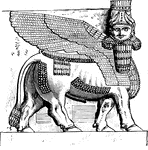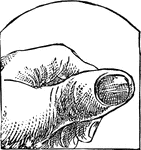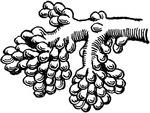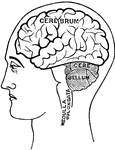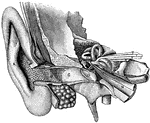
General view of organ of hearing
"A, pinna; B, cavity of the concha, showing the openings of a great number of sebaceous…

Lens of the eye
"Diagram showing the Change in the Lens during Accomadation. On the right the lens is arranged for distant…

Diagram of the Eye
"Diagram illustrating the Manner in which the Image of an Object is inverted on the Retina." — Blaisedell,…
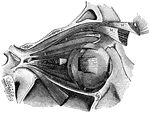
Muscles of the eyeball
"A, attachment of tendon connected with the four recti muscles; B, external rectus,…

Skeleton of the Mammoth
"Mammoth is a species of extinct elephant, the fossil remains of which are found in European, Asiatic…
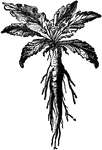
Mandrake
"Mandrake is a perennial herb. From the rude resemblance of the bifurcated root to the human figure…
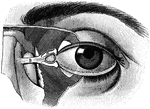
Eyeball
"The Relative Position of the Lachrymal Apparatus, the Eyeball, and the Eyelids. A, lachrymal canals,…
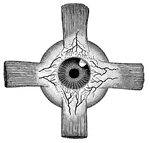
Attachment of the recti
"Showing the attachment of the recti, or straight muscles to the eyeball, also the distribution of arteries…

Nasal and throat passageways
"Diagram of a Sectional View of Nasal and Throat Passageways. C, nasal cavities; T,…

Front view of the larynx
"Cartilages and Ligaments of the Larynx. (Front view.) A, hyoid bone; B, membrane…

Posterior view of the larynx
"Cartilages and Ligaments of the Larynx. (Front view.) A, epiglottis; B, thyroid cartilage;…

Air Passage
"To illustrate roughly the passage of air through the glottis, force air through such a tube by blowing…

Hand seat
"Showing how the Improvised Three-Handed Seat may be used to carry an Injured Person. The picture also…

Everted eyelid
"Showing how the upper eyelid may be everted with a pencil or penholder." — Blaisedell, 1904
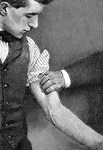
Branchial artery
"Showing how firm pressure may be made with the fingers to compress the branchial artery of the left…

Temporary splint
"Showing how a pillow, an inside coat, a "sweater", or a blanket may be used as a temporary splint on…

Hair with ringworm
"A Piece of Hair from the Scalp infested with a Mold which produces Ringworm. Ringworm may occur anywhere…

Compound microscope
"A Compound Microscope. The appearance of the various structures and tissues of the human body as revealed…

Lucian
"Lucian, the humorous satirist, was a native of Samosata, in Syria, and flourished towards the end of…
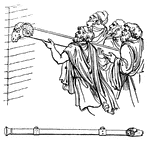
Aries
"The battering-ram, was used to batter down the walls of besieged cities. It consisted of a large beam,…

Raven
"The Raven is a large bird of the crow family. The raven has played an important part in mythology and…

Water Rice
"Rice is a well known genus of grasses, having panicles of one-flowered spike-lets, with two very small…

Sphinx
"Sphinx is a Greek word signifying 'strangler,' applied to certain symbolical forms of Egyptian origin,…
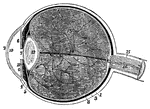
Human Eye
1, the sclerotic thicker behind than in front; 2, the cornea; 3, the choriod; 6, the iris; 7, the pupil;…

Human Eye
c, ciliary nerves going to be distributed in iris; d, smaller ciliary nerve; e, veins known as vasa…
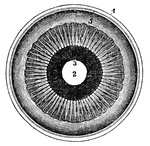
Human Eye
The iris and adjacent structures seen from behind. 1, the divided edge of the three coats, the choroid…
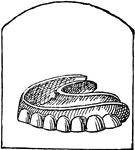
Teeth
The series of small bones attached to the jaws of animals, or human beings, which serve the purpose…

Human skeleton
"The human body, like a great building, has a framework which gives the body its shape and provides…
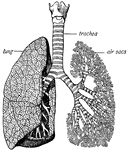
Trachea and lungs
"The trachea has in its walls stiff rings of cartilage that hold it open so that the air can…
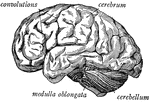
Side view of the brain
"The brain seen from the side, showing the three principal divisions." — Ritchie, 1918

Muscles of the Eyes
"The eye is moved about by six muscles. The back ends of these muscles are attached to the eye sockets.…

Bones of the Ear
"Across the middle ear a chain of three small bones stretches from the tympanic membrane to the inner…
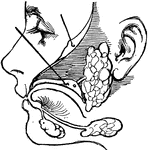
Salivary glands
"There are three pairs of salivary glands. One pair lies under the tongue; one pair is found under the…
Spine
"The spine, sawn in two lengthwise, showing the spinal canal and the holes between the vertebrae, where…
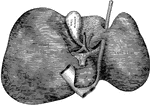
Pancreas
"The pancreas, partly cut away, so as to show the duct, which collects the pancreatic juice, and empties…
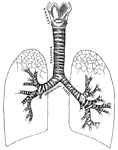
Respiratory system
"Larynx, trachea, and bronchi, showing the manner of division, and the rings of cartilage." —…

Pulmonary lobule
"Section of a pulmonary lobule, showing its division into pulmonary vesicles." — Tracy, 1888

Central Nervous System
"Brain and spinal cord, with the thirty-one pairs of spinal nerves." — Tracy, 1888

